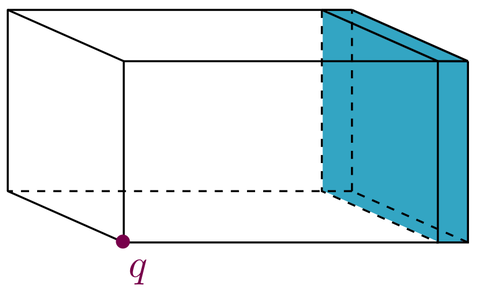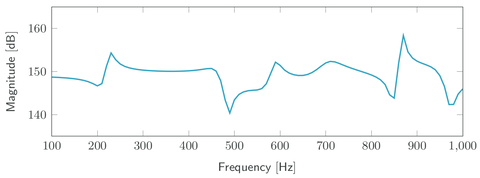 Note: This page has not been verified by our editors.
Note: This page has not been verified by our editors.
Description
The Porous absorber benchmark models the sound pressure in a cavity excited by a single harmonic load. One side of the cavity is covered by a layer of poroelastic material, which adds dissipation to the system. The geometry of this model follows [1]. Various projection-based model order reduction methods have been applied and compared using this example as a benchmark in [2].
The cavity has the dimensions  and one wall is covered by a
and one wall is covered by a  thick poroelastic layer acting as a sound absorber. The poroelastic material is described by the Biot theory[3] and the system is excited by a point source located in a corner opposite of the porous layer.
thick poroelastic layer acting as a sound absorber. The poroelastic material is described by the Biot theory[3] and the system is excited by a point source located in a corner opposite of the porous layer.
References
- ↑ R. Rumpler, P. Göransson, J.-F. Deü. "A finite element approach combining a reduced-order system, Padé approximants, and an adaptive frequency windowing for fast multi-frequency solution of poro-acoustic problems", International Journal for Numerical Methods in Engineering, 97: 759-784, 2014.
- ↑ Q. Aumann, S. W. R. Werner. "Structured model order reduction for vibro-acoustic problems using interpolation and balancing methods", Journal of Sound and Vibration, 543: 117363, 2023.
- ↑ M. A. Biot. "Theory of propagation of elastic waves in a fluid-saturated porous solid. I. Low-frequency range", J. Acoust. Soc. Am., 28(2):168–178, 1956.


 .
.